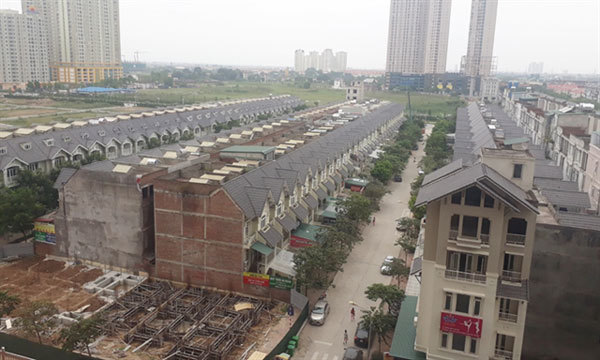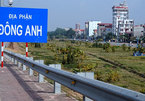 |
| A new residential area in Nam An Khanh Commune of Hoai Duc District, Hanoi. — Photo ktdt.vn |
The process of expanding urban areas has formed urban and industrial zones, attracting workers and their families from rural areas to live and work, rapidly increasing Hanoi’s population.
Meanwhile, infrastructure has not kept pace with the population increase, leading to an overload of technical and social infrastructure, especially education facilities, transportation, water supply and drainage, and environmental sanitation.
According to Dam Quang Tuan, an architect of the Urban Planning and Development Institute, Hanoi's master planning for 2030 with a vision to 2050 just mentions urban development.
There was no overall connection between urban and suburban areas in construction planning and development process, Tuan told Kinh Tế and Đô Thị (Economy and Urban Affairs) newspaper.
Rapid urbanisation in suburban areas has caused many problems, typically the rampant development of new residential areas, the architect said.
“The typical problem was that in the new residential areas, there were many construction works built in an urban style on the technical infrastructure of rural villages,” said Tuan.
“Besides, in residential areas, the investors attached great importance to economic benefits in land use that caused an imbalance in the ecological environment, leading to social and environmental consequences,” he said.
Sharing the same point of view, Dr Le Thi Bich Thuan, deputy director of the Institute of Urban Research and Infrastructure Development, said some communes in the suburban districts of Hanoi have seen rapid urbanisation with several housing projects while infrastructure was still poor leading to many negative consequences.
An Khanh Commune of Hoai Duc District is an example.
The commune is located on an area of 8.3ha and has about 30,000 residents, double the figure of four years ago. The commune's population is estimated to increase by 10,000 next year when a series of housing projects are completed, said Thuan.
“Large populations with inadequate infrastructure lead to overloads of education and transportation, especially flooding during heavy rains,” said Thuan.
According to La Hong Son, an architect of the Hanoi Planning and Architecture Department, in the process of urbanisation, the construction planning in 18 districts and townships of Hanoi's outskirts still lacked proper analysis and assessment for each specific area.
Notably, Dong Anh, Gia Lam, Thanh Tri, Dan Phuong and Hoai Duc districts have seen more rapid urbanisation and bigger populations compared to other districts, said Son.
In these five districts, detailed planning for commune centres and residential areas has not been synchronised with infrastructure and other nearby housing projects, said Son.
This had led to inadequacies in the planning, appraisal, approval and management for urban development projects when transitioning management from a rural to an urban district, said the architect.
Proper planning needed
Suburban areas are considered a vital part of a city and good suburban planning will create conditions for the city to develop.
To sustainably develop new residential areas in Hanoi outskirts, it was necessary to set up an overall management and development planning matching the historical, cultural and socioeconomic characteristics of each suburban district to strengthen connections between the central city and suburban areas, said architect Pham Thi Nham, vice director of the National Institute of Urban and Rural Planning.
“The suburban development planning should create favourable conditions for local farmers to earn money from agricultural and non-agricultural production as well as encourage clean agricultural production, generate more jobs and enable to well connect between new and local resident communities,” Nham said.
“The people would be offered better healthcare, education and housing services,” she said.
Furthermore, it was necessary to establish an infrastructure system connecting and interacting between urban and rural areas to enhance the efficiency of new urban functions, develop public transport, improve the quality of life, and reduce negative impacts on the environment and water resources, she said.
“Building a management model in co-ordination with districts, indigenous communities and investors would help new developed areas overcome the challenges of transition and attract investment sources and increase competitiveness,” she added. VNS

Messy construction rampant in Hanoi’s suburban districts
Hanoi's outskirts districts have been blighted by rampant and disorganised construction in recent years, according to officials.